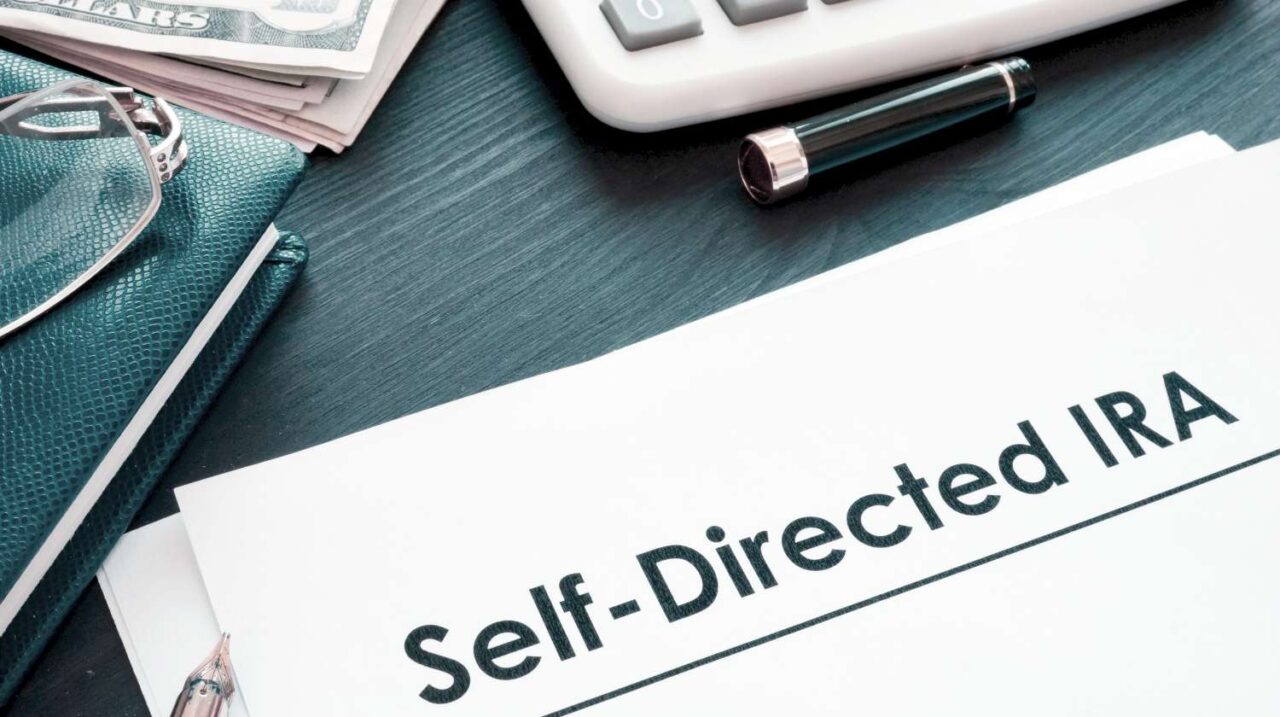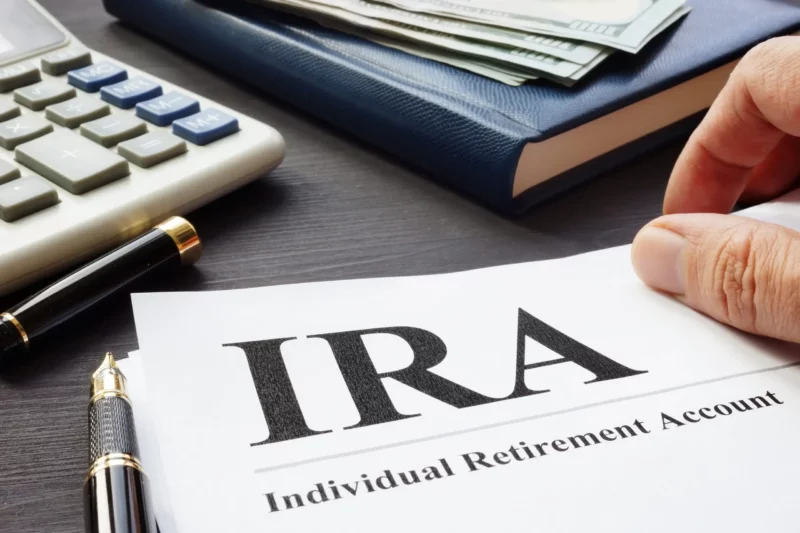IRAs have long been considered reliable investment vehicles. However, most traditional and Roth IRAs often limit customers to conventional investments, such as stocks, bonds, and mutual funds.
If you are looking to diversify your retirement portfolio with alternative assets that offer the potential for higher returns, such as cryptocurrency, gold, and real estate, a self-directed IRA may be perfect for you.
Opening an SDIRA is easier than you think! Let’s explore this powerful investment tool further to see if it can be a good fit with your long-term retirement plan.
What is a Self-Directed IRA?
A self-directed IRA is a tax-advantaged account that allows investors to amass wealth for retirement using alternative investments compared to traditional or Roth IRA accounts.
However, the primary difference between the two investment options is how and where you can invest your funds.
Traditional and Roth IRAs rely on stocks, bonds, and mutual funds for growth. In contrast, self-directed IRA owners can invest in any of the following assets, including but not limited to:
- Real estate: Adding real estate to an SDIRA allows investors to take advantage of rental income, tax savings, wholesaling, home flipping, and property appreciation with a highly sought-after, tangible asset.
- Cryptocurrency: Holding cryptocurrencies in an SDIRA like Bitcoin and Ethereum can help investors generate higher-than-average returns. Establish an LLC to hold the physical wallet if you do not want to keep your crypto on an exchange.
- Precious metals: Investors can access metals, such as gold and silver, which can be held physically under your SDIRA.
- Private equity: SDIRAs also allow investors to allocate funds toward private companies and startups. Be mindful that early-stage ventures entail a long-term investment horizon, so you may not see returns for a very long time.
- Promissory notes: In exchange for regular interest payments, investors can lend money to others through commercial businesses. Enjoy a fixed income component to your SDIRA holdings, a nice counterbalance to more aggressive investments.
- Tax liens: Tax liens allow investors to generate returns through interest payments (or even discounted real estate) if property owners do not redeem.
- Private placement: Investors can use private placement opportunities to reduce exposure to publicly traded securities.
Most banks and traditional financial institutions offer standard IRAs. However, if you want to invest in alternative assets with a self-directed IRA, you’ll need to find a specialized custodian who deals in these assets, like Horizon Trust.
Do I Need a Custodian to Set Up a Self-Directed IRA?
All IRAs, including SDIRAs, require a custodian, but each custodian’s role may differ. For example, an SDIRA custodian may allow you complete control over your account and which investments you pick.
On the other hand, many specialized firms offer active financial management advice to help you get started and make informed investment decisions regarding your SDIRA. While searching for the right custodian for your SDIRA, it’s important to thoroughly review their experience, expertise, and self-directed IRA fees before you decide.
Although you have the ultimate say in investing your money, the right custodian can ensure you have the support you need and access to the alternative investments you want.
Traditional SDIRAs vs. Roth SDIRAs
Traditional Self-Directed IRA
- Contributions made with pre-tax dollars (i.e., contributions are not taxed, but earnings are).
- All contributions are tax-deductible.
- No income limits.
- Standard contribution limit: $7,000 annually (+$1,000 for people 50 and over)
- Early withdrawal penalty of 10% if you withdraw before age 59 ½.
- Required minimum distributions (RMDs) begin at age 73.
Traditional self-directed IRAs offer tax-deductible contributions, reducing your taxable income every year. Any funds withdrawn during retirement will be subject to income tax. If you expect to be in a lower tax rate upon retirement or if you are in a higher tax bracket closer to retirement, this type of SDIRA may be right for you.
Roth Self-Directed IRA
- Contributions made with post-tax dollars (i.e., contributions are taxed, earnings are not).
- Contributions are not tax deductible.
- 5-year withdrawal period required for newly opened Roth IRAs to avoid an early withdrawal penalty.
- Modified Adjusted Gross Income limit (MAGI) of less than $161,000 for single tax filers and less than $240,000 for those married filing jointly.
- Standard contribution limit: $7,000 annually (+$1,000 for people 50 and over)
- Withdrawals are not taxed; earnings are subject to an early withdrawal penalty of 10% before age 59 ½.
- No RMDs.
If you are in a lower tax bracket now or expect a higher tax rate upon retirement, then a Roth self-directed IRA may work for you. All earnings in a Roth self-directed IRA are tax-free after the early withdrawal period, giving you ample room to capitalize on compound interest.
Self-Directed IRA Contribution Limits
Despite their differences, the IRS views IRAs and SDIRAs similarly, particularly concerning contribution limits. For example, contributions in 2024 have risen to $7,000 annually, with a $1,000 additional catch-up contribution for individuals 50 years or older.
Excess Contributions
If your annual SDIRA contributions exceed the limits set by the IRS, they get taxed at a rate of 6%. This tax applies for each year the excess funds remain in your account. If you do exceed contribution limits, you must withdraw the excess funds, as well as any earnings made of those funds, by the time you file your tax return.
What Are the Pros and Cons of a Self-Directed IRA?
Self-directed IRAs have many benefits, but they aren’t right for everyone. If you’re considering opening an account, it’s important to weigh the pros and cons.
Pros
- High Returns. SDIRAs offer a wider range of assets, including cryptocurrency and real estate, that can often beat out market returns with sizable gains. However, these gains will depend on your savviness and confidence as an investor.
- Diversification. SDIRAs make it easier to round out your investment portfolio and create stability against an often volatile stock market. Many of these assets also provide a hedge against inflation that allows you to protect the value of your contributions since you can’t access your funds until retirement age.
- Tax-Deferred. Unlike traditional investments that require creative ways to avoid taxes and make money, self-directed IRAs host Traditional account options to help you defer your tax burden until you take out the funds from your account.
- Checkbook Control. By establishing an LLC owned by your IRA, you gain direct access to your IRA funds, allowing you to make investment decisions without the need for custodial approval.
- Due Diligence. IRAs are managed by the custodian, leaving due diligence in their hands. SDIRA custodians are passive, meaning you’re responsible for exploring and educating yourself about the risks and benefits of any given investment opportunity.
- Increased risk. The enhanced freedoms allotted by SDIRAs allow you to invest in a wide range of alternative assets, but it also increases the associated risk. Some investment opportunities, like cryptocurrency, can be particularly volatile. That’s why you must be well-versed in investing and work with a trusted custodian.
- Increased restrictions. Depending on what you invest in, you may face restrictions that limit your ability to use or otherwise enjoy your investment. This is particularly true for real estate, as federal law prohibits SDIRA owners from using their real estate investments. That means you can’t live or let family members live, even momentarily, in a real estate asset that is included in your SDIRA Portfolio. The same is true of commercial real estate.
Common Self-Directed IRA Mistakes
Here are five top reasons why SDIRA investors can fail:
- Using IRAs For the Benefit of Disqualified Persons: As a rule, an IRA owner cannot borrow from their IRA to purchase big-ticket items for personal use nor give out loans to a disqualified person. For instance, account holders are prohibited from buying a home for personal use using their retirement funds.
- Not Knowing Allowable Investments: In short, the IRS considers collectibles, derivatives, and coins as non-allowable investments. Collectibles can include items like antiques, stamps, gems, artwork, and rugs, limiting the allowed collectibles.
- Neglecting to Brush Up on Prohibited Transactions: Much like knowing what the IRS allows when opening your account, it’s best to have a thorough knowledge of prohibited transactions. Any prohibited transaction can immediately disqualify your IRA and all your hard-earned money with it.
- Dishonest Dealings: Mishandling or dishonestly using any of your assets is a quick way to void your retirement fund. Dishonest dealings include avoiding paying taxes, abusing property owned by your IRA, and other restrictions that call for a separation between your involvement
- Lack of Due Diligence: Opening an SDIRA account can be tricky if you still need to research. While a self-directed retirement fund has many opportunities, like many other ventures, a considerable risk is involved if you do not educate yourself.
How to Set Up a Self-Directed IRA
Self-directed IRAs can seem confusing, especially if this is your first time considering or opening one. However, opening an SDIRA is relatively easy and can typically be completed in five steps:
- Choose a custodian for your account. Many financial institutions offer IRAs, but fewer allow customers to open SDIRAs. If you’re considering an SDIRA, look for an experienced custodian well-versed in alternative investments that offers hands-on legal and investment support to help you navigate your financial journey.
- Decide what type of SDIRA you want to open. Like regular IRAs, you must choose between a traditional SDIRA or a Roth SDIRA. There are pros and cons to both options. A well-versed custodian or financial advisor can help you decide which is right for you.
- Review your investment options. Expanded access to investment options is one of the greatest benefits of SDIRAs, but it also means you’ll need to do due diligence and thoroughly research available assets, risk tolerance, and long-term goals.
- Submit an application. The SDIRA application process varies from company to company, so it’s always a good idea to speak to a representative to find out exactly how you apply and what information is required. Do your due diligence when searching for financial custodians to find one who will provide the amount of service you require to get started.
- Fund your account. Once your SDIRA account is open, you can fund your account through traditional contributions, rollovers from existing accounts, or transfers between same-type accounts (e.g., a traditional IRA to a self-directed IRA).
A self-directed IRA can help you create a well-rounded investment portfolio that enables you to invest in potentially lucrative alternative assets, like real estate, precious metals, and cryptocurrency.
If you’re a seasoned investor looking for expanded opportunities or more lucrative investment avenues, then an SDIRA may be right for you. There are increased risks associated with an SDIRA account, however. As such, it is essential that you thoroughly research and understand your options and work with a trusted custodian.
Horizon Trust has decades of experience helping our clients amass wealth through investment opportunities not readily available in mainstream financial markets. Contact us today to learn more about SDIRAs and how they can fit into your overall retirement strategy.
FAQs: Self-Directed IRAs
Are Self-Directed IRAs FDIC Insured?
Self-directed IRAs are not FDIC-insured. The Federal Deposit Insurance Corporation (FDIC) insures “traditional deposit accounts.” These accounts typically include funds in a checking or savings account, money market deposit accounts, and certificates of deposit (CD).
However, if funds from your self-directed IRA are housed in one of the accounts listed above, and an FDIC-insured financial institution holds the account, then your funds are likely insured by the FDIC.
For the most part, the FDIC does not cover many types of investment accounts commonly found under the SDIRA umbrella.
The list of excluded investments includes stocks, bonds, and mutual funds; government, municipal, and U.S. Treasury securities; cryptocurrencies, etc.
Do You Pay Taxes on a Self-Directed IRA?
SDIRAs are tax-advantaged accounts similar to Roth and Traditional IRAs. The tax implications of an SDIRA depend on the type of SDIRA account you hold.
When you open a Self-Directed Traditional IRA, you reap the benefits upfront. Your account will grow tax-deferred. Once you hit retirement age (59 ½, according to the IRS), you can withdraw funds without penalty, but you must pay taxes on your withdrawals. Tax rates for Traditional IRAs are based on your income, so the amount you pay will depend on your income.
With Self-Directed Roth IRAs, any contributions get taxed upfront. Contributions withdrawn before age 59 ½ will not be penalized, though all earnings will be subject to a 10% penalty.
Can a Self-Directed Ira Invest in a Business?
Yes, you can use a self-directed IRA to invest in a business. However, there are some restrictions:
- Family Business: If you or your parents own a business, you are prohibited from investing in that business using your SDIRA account. Conversely, you can invest in siblings,’ cousins,’ or any friends’ business.
- UBIT: Any unrelated business income that falls outside the realm of investment income, such as dividends paid to shareholders or capital gains made from the sale of shares, may be taxed at a rate of up to 37%
- S-Corporations: IRA accounts are prohibited from investing in S-Corporations.
Related Posts
March 28, 2024
Is Self-Directed IRA Real Estate Wise? 10 Pros & Cons
Self-directed investment can open many doors for investors. There are many…




